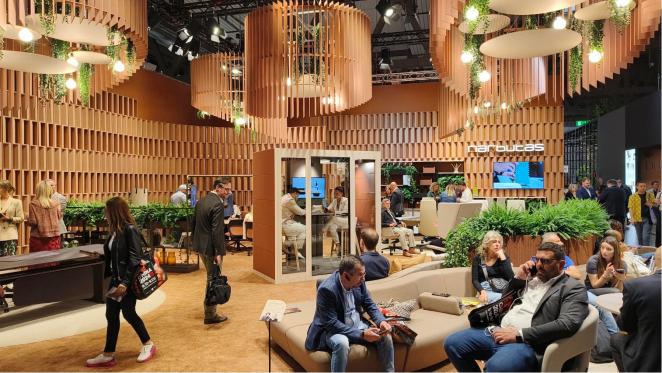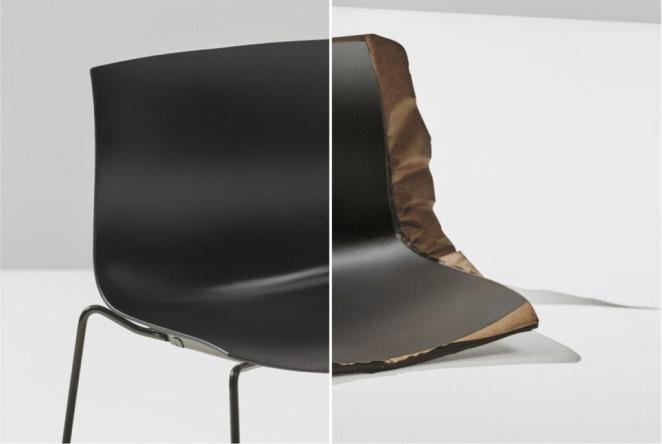A team of three colleagues from WOOD.BE visited the Workspace fair in Paris and the Design Week in Milan
Circularity: Is it present at the major fairs?

Diging around on the internet and reading articles about circularity in offices is one thing, but going out and speaking to people is what really gives a good insight into the circularity trends (or the lack thereof) in office furniture. That’s why in March and April, a team of three colleagues from WOOD.BE visited the Workspace fair in Paris and the Design Week in Milan.
What fairs are we talking about?
Workspace Expo is a three-day fair for office furniture in Paris (Porte de Versailles). Around 300 exhibitor brands were present, half of which were non-French brands. Milan Design Week might be probably the biggest and most famous design fair worldwide. It includes the Salone del Mobile (the furniture design fair).
Our key Insights from the fairs
At Workspace, one big elements caught our attention regarding circularity. First of all, in the discussion, there was the omnipresence of the AGEC law in France (Anti-Waste for a Circular Economy). This law, which came into effect on 01/01/2022, aims to reduce waste and develop solidarity-based donation, and re-use and recon-ditioning work-use, and encourage a more sustainable and responsible economy. It also highlights the importance of re-use in the field of office furniture. One of its provisions requires public companies to devote a percentage of their budget to the purchase of second-hand furniture. The AGEC law establishes a clear obligation for public companies: 20% of their office furniture purchases through public procurement must now come from re-use.
The topic of the circular economy can also be developed further in Milan. Even among the young upcoming designers, the functional and aesthetic design prevail. Most of the companies limit their circularity efforts to the use of recycled or recyclable materials, without a supporting circular business model or without proposing a complete circular design. However, famous luxury brands such as B&B Italia and Cassina use innovative materials and sustainable production processes that ensure sustainable production, but they don’t want or need to promote this, since their customers are only interested in good-looking, high-quality furniture. Thereby, these luxury brands make very long-lasting furniture, for which they also offer a long-lasting service (which is part of the high-end product luxury the client pays for).

Upcycling Design
Our highlight was the innovative sustainable materials present at the Milan Design Week. Materially, a material library and consultancy exhibited for example fibreboards from Invernizzi made from 100% poplar residues, and BioPowder from olive stones. Also, a lot of brands came up with innovative materials and ways to use them: Fantoni created a three-layer MDF panel with the middle layer existing from 50% recycled materials. Arper created the Catifa Carta Chair together with the Swedish start-up Papershell. Like the name says, the chair is made from papershell, a material from kraft paper and a biobinder.
The visits to the fairs were gold mines of information, now it is up to us to integrate it in the project!
